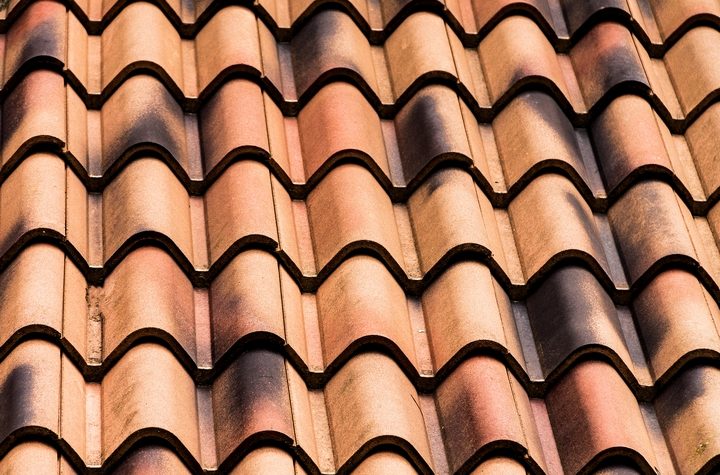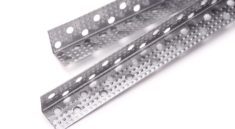The roof of your house is an important part of what helps keep you and your family warm, dry, and safe. Known accurately as a roofing system, they can be made of asphalt, tar, rubber, clay, composite material, wood, metal, cement, or stone.
Each of these materials has made its way onto the list thanks to its ability to keep out water, but they all also offer various benefits and drawbacks. Different types of roofing systems may also be more or less accessible depending on your budget. And of course, where you will live may also factor heavily in your roofing needs and the amount of exposure to heat, high winds, extreme snow, hail, and fire in your area will ultimately affect your choice.
It is important to understand your options in order to choose the best roofing system. Below are seven different types of roofing systems to choose from:
Type #1: Asphalt roof shingles

These types of roofing systems are essentially a composite made of asphalt, fiberglass, felt, and mineral granules pressed together. Asphalt shingles are typically made in a rectangular shape with three tabs. Popular due to the fact that they come in many colours and styles, and also don’t require much maintenance, you can expect your asphalt shingles to last somewhere between 10 and 30 years.
Thanks to a fairly easy installation process, asphalt shingles are generally inexpensive. In an asphalt roof system, the surface shingles are laid over wood decking made from closely spaced planking or sheets of plywood. Asphalt shingles are also available in a laminated variety that is simply a thicker, two-layered version of the standard asphalt shingle.
Type #2: Rubber membrane roofing systems

A petroleum product, rubber membrane roofing is made from ethylene propylene diene terpolymer (EDPM). Unlike shingles, this type of roofing system comes in rolls or sheets of various widths. An ideal option for flat or low-pitched roofs, the membrane is usually glued directly onto a wood roof deck and the seams are waterproofed.
Type #3: Slate roofing systems

In parts of the world with an abundance of slate, this has been a popular type of roofing system for hundreds of years. Lasting up to 10 decades, slate is also an aesthetically pleasing option due to its natural colour variation and the fact that no two shingles are exactly the same.
Slate is a very heavy material and can therefore only be installed on a structure that is engineered to support the extra weight. For this, and the fact that it takes added skill and time to install, it is definitely more expensive than some of the other options on this list.
Type #4: Clay tile roofing systems

Slightly heavier than slate, clay tiles come in many colors, shapes, and sizes, including flat shapes to mimic slate and wood. The most traditional variation, the rounded tiles that are common in many European cities, are either a one-part system, in which each tile has a rounded portion and water-collecting pan portion situated side by side.
Alternatively, it can be part of a two-part roofing system with a rounded top tile and a separate, flatter pan tile installed as separate pieces. Due to the fact that clay tiles are quite fragile, they need to be installed differently depending on the style of the tile and according to local codes. It is therefore necessary that they are done by trained professional roofers.
Type #5: Metal roofing systems

Most modern metal roofing systems for homes is now called standing seam roofing and is a far cry from what you’d see on the mental topped sheds and storage facilities of years passed. Praised for its durability and fire resistance, standing seam metal roofing comes typically comes in prefabricated long strips or strips that are created on-site with special forming machines.
The name comes from the way in which these strips are connected, as an overlapping raised (standing) seam prevents water from getting through. In order to properly install a metal roof, you’ll need workers skilled in both roofing and metalworking.
Type #6: Composite & rubber roofing systems

Among the most environmentally friendly types of roofing systems, composite and rubber roofing are made from recycled materials. Typically composed of used tires, this style can then be modelled to look like other roofing styles, including slate and asphalt shingles.
At first, the price of composite roofing can seem high, but it is important to keep in mind that it carries with it a lifespan of more than 50 years. Alongside relatively low installation costs, composite and rubber roofing is a good option for anyone looking to invest in an ecologically friendly roofing solution.
Type #7: Solar tile roofing systems

Another green roofing system type, there are now a number of products on the market that incorporate solar collection into the actual roofing material. This is a more sophisticated and integrated approach than the traditional stand-alone collection of solar panels attached over the top of existing roofing materials.
Some products now even appear almost identically to their regular counterparts. Their availability is likely to increase in years to come, but it is worth noting that they require extensive wiring during installation.




